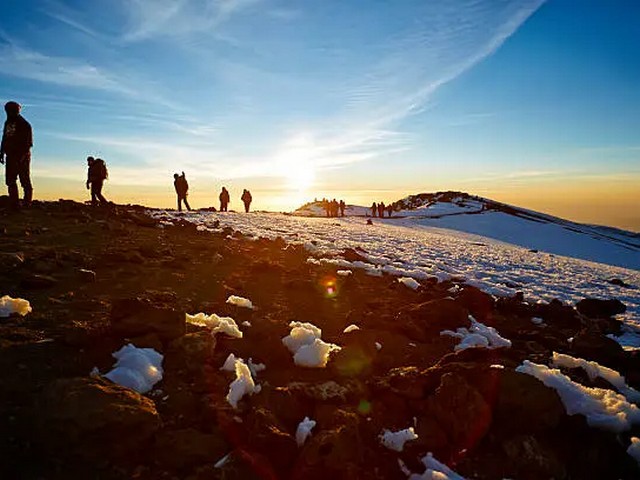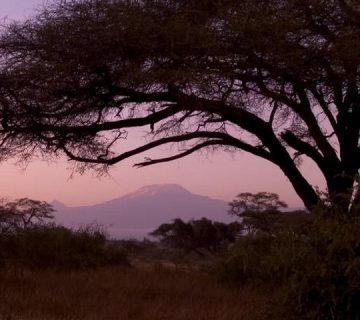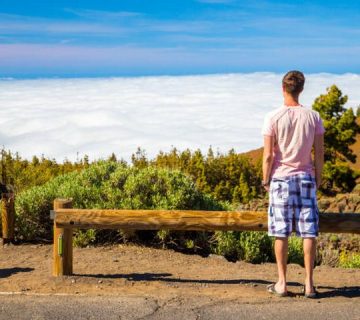Ascending to the Roof of Africa: Mastering Altitude Acclimatization Schedules for Kilimanjaro
Embarking on a journey to climb Mount Kilimanjaro is not just about physical strength; it’s about embracing the heart of Tanzania, understanding the spirit of adventure, and respecting nature’s colossal marvels. One critical aspect that stands between the dream of reaching Uhuru Peak and successfully standing atop is mastering altitude acclimatization. At Kilimanjaro Centre for Trekking and Ecotourism (KCTE), we believe that proper acclimatization is not merely a safety measure, but a cornerstone of an enriching climbing experience.
What is Altitude Acclimatization?
Altitude acclimatization is the process by which the body adjusts to the decrease in oxygen availability at higher elevations. As you ascend the majestic slopes of Kilimanjaro, the air becomes thinner and your body needs time to adapt to the reduced oxygen levels. This adaptation is crucial for you to continue climbing safely and comfortably.
Why is Altitude Acclimatization Crucial for Climbing Kilimanjaro?
Climbing Kilimanjaro exposes you to the risk of altitude sickness, which can range from mild symptoms like headaches and nausea to severe conditions such as High Altitude Pulmonary Edema (HAPE) and High Altitude Cerebral Edema (HACE), both of which can be life-threatening. A well-planned altitude acclimatization schedule significantly reduces these risks and enhances your overall summit success rates.
Explore KCTE’s Recommended Altitude Acclimatization Schedules
The 7-Day Machame Route: A Popular Choice for Effective Acclimatization
One of our most recommended paths for optimal acclimatization is the 7-Day Machame Route. This route allows for a gradual ascent and includes a crucial acclimatization day, where you hike to a higher altitude during the day and sleep at a lower altitude at night. This ‘climb high, sleep low’ strategy is proven to aid your body in adjusting to higher altitudes effectively.
The 8-Day Lemosho Route: Immersing in Nature While Acclimatizing
For those who prefer a more serene and scenic journey, the 8-Day Lemosho Route offers an unparalleled opportunity to acclimate slowly. The route starts from the lush rainforests and ascends through various climate zones, providing more days for acclimatization before reaching the higher camps. The extra day on this route can make a significant difference in how well you adapt to the altitude.
The 9-Day Northern Circuit: The Ultimate Acclimatization Experience
For the ultimate in acclimatization and a truly immersive Kilimanjaro experience, the 9-Day Northern Circuit is the pinnacle. This route offers the longest journey around the mountain, ensuring that your body has ample time to adjust to the altitude. The gradual ascent and additional acclimatization days included in this itinerary significantly increase the likelihood of a successful and enjoyable summit attempt.
Tips for Enhancing Altitude Acclimatization
- Hydrate Regularly: Dehydration can mimic or exacerbate symptoms of altitude sickness. Drink plenty of water throughout your climb.
- Pace Yourself: It’s not a race to the top. Climbing slowly increases your acclimatization rate.
- Eat Well: Your body needs more calories at altitude. Ensure you consume enough food.
- Sleep Well: Good rest is crucial for recovery, especially at high altitudes.
- Listen to Your Body: Recognize the symptoms of altitude sickness early and communicate them to your guide.
Frequently Asked Questions (FAQs)
What is the best time of year to climb Kilimanjaro for optimal acclimatization?
The best times to climb Kilimanjaro are during the dry seasons, from June to October and from December to March. The favorable weather during these periods supports gradual acclimatization.
Can I take medications to aid acclimatization?
Medications like Acetazolamide (Diamox) can aid in acclimatization. However, it is essential to consult with a healthcare provider before starting any medication.
How can I prepare for altitude acclimatization before arriving in Tanzania?
Engage in cardiovascular exercises such as hiking, running, or cycling. Pre-acclimatization strategies such as sleeping in a hypoxic tent that simulates high altitude can also be beneficial.
What should I do if I start experiencing symptoms of altitude sickness?
Inform your guide immediately if you feel unwell. Mild symptoms can often be managed with rest and medications, but descent is necessary if symptoms worsen.
Ready to Conquer Kilimanjaro?
At Kilimanjaro Centre for Trekking and Ecotourism (KCTE), we are dedicated to providing you with a safe, memorable, and successful climbing experience. Our expert guides are trained to assist you in mastering altitude acclimatization, ensuring you enjoy every step of your journey to the summit.
Climbing Kilimanjaro is a transformative experience that challenges your limits and expands your horizons. By choosing the right acclimatization schedule with KCTE, you’re not just preparing for a climb; you’re gearing up for the adventure of a lifetime. Contact us today to book your Kilimanjaro adventure and let us guide you to the top!
Remember, the mountain calls not just for your strength, but for your respect to its towering heights and your commitment to adapt. Let KCTE be your partner in this extraordinary journey to the roof of Africa.




